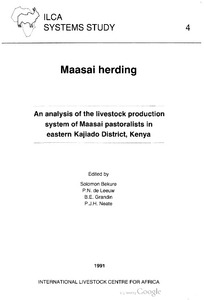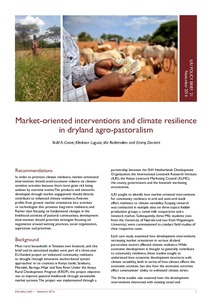Livestock production in central Mali: Long-term studies on cattle and small ruminants in the agropastoral system
Presents results of a 6 year study on the livestock production systems, management practices herd & flock demography in an agropastoral system in central Mali as well as reproductive performance growth rate, weights, mortality, offtake and productivity in terms of meat & milk yield of cattle & small ruminants; includes recommendations on means of improving the system and future research.











